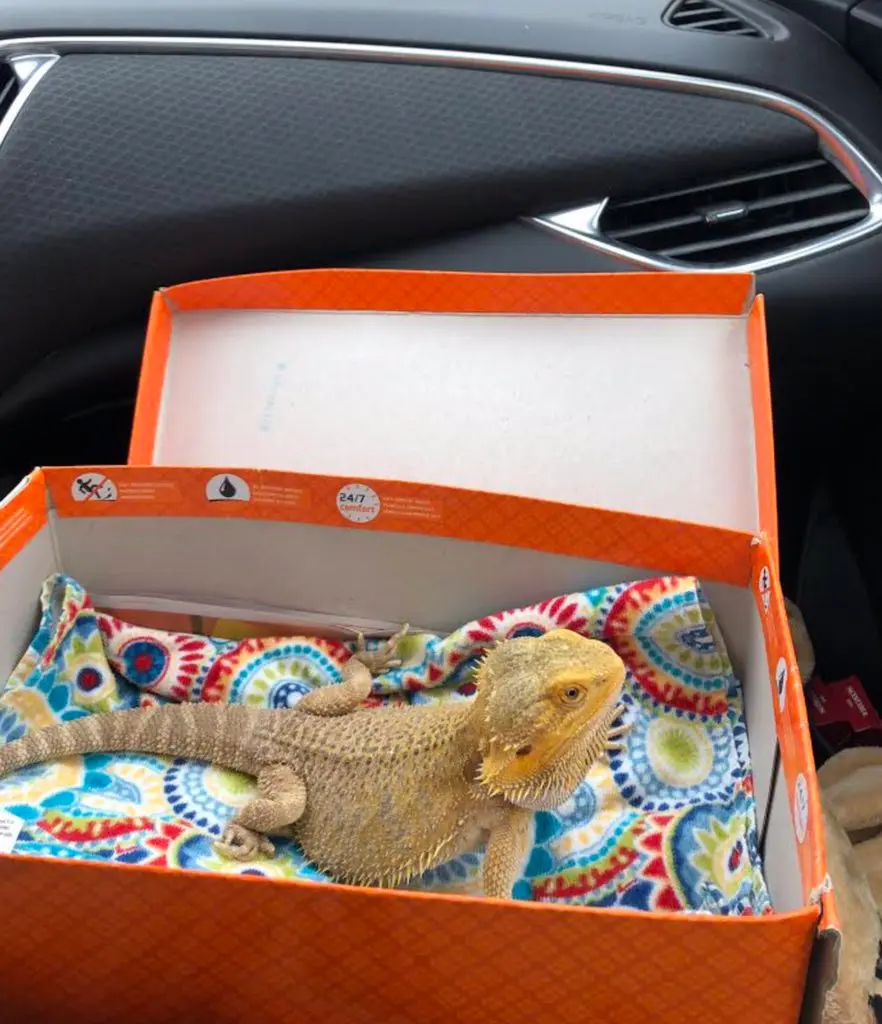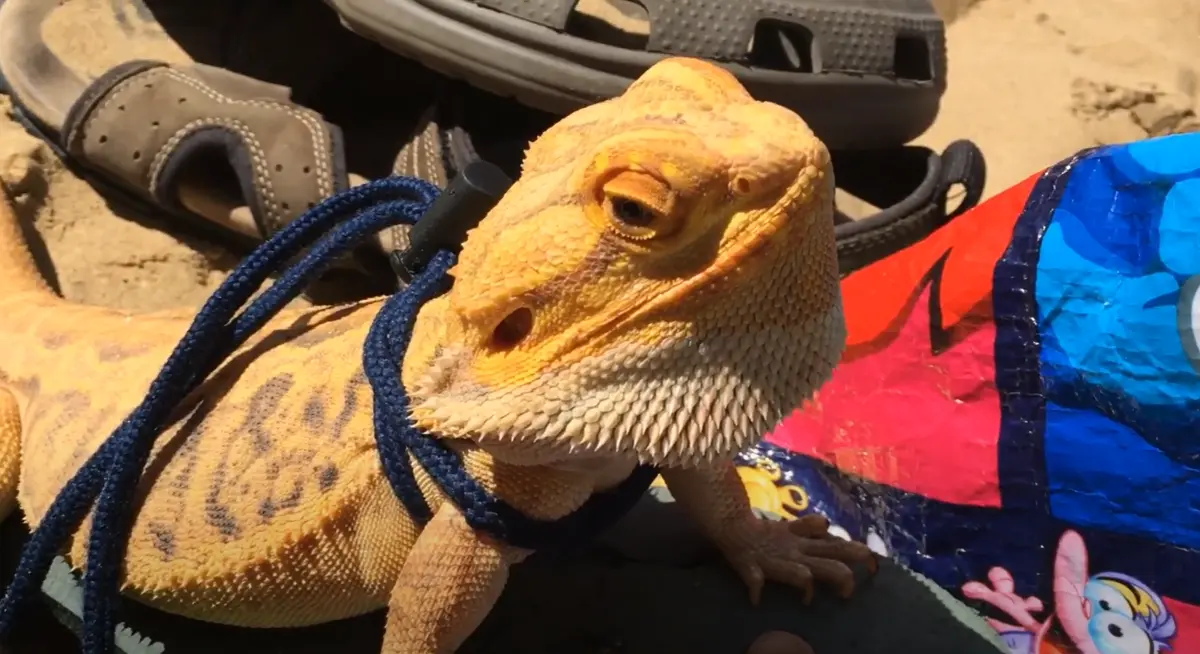Traveling is an exciting part of human life, and choosing to travel with a Bearded Dragon can be an exciting adventure because sometimes it’s necessary to bring along our beloved pets to avoid yet another behavioral issue called separation anxiety.
Bearded dragons are unique companions that require specific care and preparations when moving around.
Taking them on trips increases your bond, however, it isn’t as straightforward as with a cat or a dog. To facilitate a smooth transit for yourself and your bearded buddy, it is essential to be thoroughly equipped.
Today, we will look into detailed strategies to ensure your bearded dragon’s care and comfort during future travels.
Pre-Travel Preparations
Before stepping out the door, ensure you have planned the journey carefully.
1. Veterinarian Examination
A vet visit is important to ascertain your pet’s health before embarking on a journey. Conduct a full check-up to rule out any potential ailments that could affect your journey.
This check-up could help prompt tailored treatment, if necessary, and lead to advice on maintaining your pet’s health during traveling.
2. Regulatory Permissions
Are you traveling across state lines, or perhaps venturing overseas? Be sure to cross-reference every destination’s legal requirements for transporting pets, especially specific to bearded dragons.
3. Carry Essential Supplies
You should have a readily available list of supplies your dragon may need. This list often includes food, a portable basking source, a UVB lamp, vital medication, substrate, and more. It’s also wise to pack extra supplies in case of unforeseen delays.
The Ideal Travel Carrier
The quintessential travel carrier should be secure, ventilated, easy to clean, and just the right size to prevent discomfort to your bearded dragon.
- Size: Your bearded dragon should roam, stretch, and flip over with ease in the chosen carrier. Choose a carrier smaller than the typical glass terrarium but spacious enough for comfort.
- Ventilation: Bearded dragons need fresh air to avoid suffocation or overheating. Your carrier should, therefore, have proper ventilation, either through mesh sections or drilled holes.
- Cleaning Ease: Frequent waste disposal and cleaning of your pet’s temporary home is essential. Opt for a carrier with a removable tray to enable swift and hassle-free cleanups.
Maintaining the Optimum Temperature
Bearded dragons are cold-blooded animals that need a heat source to maintain their body temperature. At least for 24 hours, they require a bask at around 95°F during the day, dropping to a cool zone of around 75°F at night.
- Avoid Extreme Temperatures: Keep the carrier away from vents blasting hot or cold air and protect them from direct sunlight bearing excessive heat.
- Heat Packs: During cold weather, the use of heat packets is a good way to maintain temperature. Ensure these are secure and won’t burn your bearded dragon.

Mealtime
Feeding your pet while on the road assures they stay nourished and hydrated.
- Water Supply: Have a shallow dish for water that your bearded dragon can drink from, or occasionally mist your pet with a spray bottle.
- Food: Offer fresh and light food including fruits, veggies, and pre-prepared Bearded Dragon Diet food for easy digestion.
Comfort and Security
The journey can be quite stressful for your pet. Therefore, providing a comfortable and secure environment is essential.
- Substrate: The carrier lining should be soft with absorbent materials like paper towels or reptile carpets that allow grip and absorb waste.
- Hiding Spaces: A small box or a cloth inside the carrier works perfectly as a hiding place offering security amid transit uncertainty.
Destination Arrival
Once you reach the destination, it’s time to establish the bearded dragon’s habitat again.
- Habitat Set-up: Immediately set up your bearded dragon’s familiar environment. This includes their usual enclosure items, lamps, and temperature monitoring devices.
- Observation: Check for any signs of distress or illness. If your pet refuses food, appears lethargic, or shows behavioral changes, it might be time to visit a vet.
Traveling via Various Modes
Traveling with bearded dragons can be challenging. However, these challenges can be confronted head-on with a little foresight and planning.
- Car Travel: When driving, secure the carrier to prevent jostling. Make regular stops for temperature checks and feeding, and never leave your pet unattended in the car.
- Air Travel: Flying presents a variety of regulations, so study your airline’s specific rules surrounding pet travel. Always endeavor to travel with your bearded dragon in the cabin, avoiding the harsh, uncontrolled conditions of the cargo hold.
- Train & Bus Travel: Before you book any tickets, it’s critical to consult with the respective bus or train companies about their pet policies. Unfortunately, public transport seldom allows pets, necessitating careful planning.
Long Distances Journeys
Long trips pose their particular set of issues, but timely interventions can help solve them. Plan your route taking into account suitable stopping points.
Secure pet-friendly accommodations and try to limit your bearded dragon’s exposure to new environments.
Conclusion
Your decision to travel with a bearded dragon may entail some effort but not any more than the joy of sharing adventures with your cherished pet. So pack up well, plan wisely, and bon voyage!
